It’s easy to see why many manufacturing companies once believed that inbound marketing is a technique only used by internet whiz-kids and their computer-box technology products.

From the outside, inbound tools sound like little more than an impenetrable thicket of buzzwords. Phrases like “SEO”, “Editorial Calendars” and “Conversion Optimization” seem to have little to do with the lead generation manufacturing companies need to survive in a competitive market (spoiler: they actually have a lot to do with lead generation).
With a now well-established track record of cross-industry success, manufacturers have increasingly come around to the idea that inbound is a necessary complement — if not a full replacement — for traditional outbound channels.
And yet many companies still hesitate to take the plunge, keeping adoption from becoming a reality. There are two main reasons for this. First, they fear that even if they believe inbound can work, it will mean abandoning their outbound efforts — and destroying their pipeline in the process. And second, they fear that they simply won’t be able to execute it properly regardless.
Manufacturing Companies Need To Pass The Baton
The impact of this hesitation is very simple — lost ROI. Every day that goes by without making the transition towards inbound marketing is another day it that lets a company's (irrational and unfounded) fears keep them from modernizing their marketing efforts and using inbound to decrease costs and increase sales.
In other words, every day that the baton of manufacturing sales leads isn’t passed from outbound to inbound is another day that money is left on the track.
Companies looking to pave the way towards integrating inbound should take some time to get the facts about how inbound works, what it can do, and understand how it is possible to manage the transition in a way that will keep their sales pipeline in-tact and running throughout the entire process.
4 Ways Manufacturers Can Make a Seamless Transition From Outbound to Inbound
Below, we look at four of the ways inbound’s proven techniques can be effectively executed by manufacturing companies while also maintaining the sales produced by their current pipeline.
1
Stop Cold Calling And Start Talking To Leads Instead

Instead of using traditional outbound methods such as cold calling — which is basically a nice label for the practice of shouting at random people — take your industrial advertising messaging to an audience of people that actually want to listen. Just like a runner helps the next runner on their relay team, talking to leads helps them through the next stage of the sales funnel.
Manufacturing companies can do this successfully by repackaging their marketing messaging in the form of a newsletter. A newsletter really boils down to a list of contacts, and the mechanics of running one successfully is really no different either — you periodically reach out with information solving your prospect's problems and challenges with your product or service.
However, there are two key differences.
Combined, this takes the cold-calling concept of reaching out to leads and passes it off to a mechanism that lets you only speak to the leads most likely to buy from you and to do it more often.
You can also take part in warm calls. Dan Tyre of HubSpot talks about how cold calls are dead. Roketto’s co-founder, Ulf Lonegren, speaks about this revelation in his blog post “Raising a Lion - 5 Lessons From Dan Tyre’s Pipeline Generation Bootcamp.”
2
Take Your Visual Talents To Social

One of the biggest mistakes manufacturing companies make when it comes to inbound marketing is believing they need to abandon everything that they already did well in their outbound marketing efforts. There's no greater example of this than in the switch between social media and visual advertising and marketing.
Rather than putting together an excellent visual advertisement and paying a bunch of money to have it shown in a magazine where it may or may not be seen by your target audience, put it out on various social media channels. When used properly, platforms such as Facebook, Twitter and LinkedIn will allow you to connect your image and message with your audience via the use of dedicated pages, message targeting as well as hashtags.
This simply means that you pass the baton of your current visual assets off to a platform where it will have a much greater impact on manufacturing sales.
To break it down, using your visual talents when it comes to outbound marketing may not yield results. You can’t tell how well your print advertisement did or your large billboard. But when you switch to digital, inbound methods, there will be data on every campaign you do. You can see what’s working and change what’s not. Your advertising money will finally be used properly. It will help you cross the marketing finish line in first place.
3
Get The Right Tools For The Job

There've been huge innovations in the tools used by inbound marketing in recent years. Platforms such as HubSpot now give companies the ability to use data analytics, automation, and ongoing optimization to deliver leads exactly what they need, when they need it. And once a winning strategy is found, it can be iterated and grown along with the business.
Outbound marketing techniques do not always yield actionable data and can be difficult to scale based on limitations either in terms of available media space and/or human capital within the business itself.
Inbound doesn't require manufacturing companies to change the way that they market, it simply lets them pass off those efforts onto a platform that offers them the opportunity to streamline and scale.
4
Make Sure Everyone Is On The Same Track

Despite all of the advantages of inbound marketing to industrial lead generation, it’s inevitable that a company used to outbound techniques will have to make a transition.
For that reason, one of the most important things that management can do is explain that the abandonment of interruptive or abrasive techniques in favour of educational ones means that the leads inbound produces are ultimately those that have sought out the company, and not the other way around.
Ultimately, this means that everyone involved in sales and marketing at the organization can expect to benefit from an increased interest by leads in the company, and ultimately, more sales and revenue.
Roketto specializes in manufacturing marketing and sales. If you have any other questions, don’t hesitate to contact us. We’d be happy to explain why your manufacturing company needs to switch to inbound marketing.

Ulf Lonegren
Ulf Lonegren is CEO and Co-Founder of Roketto, where he has led digital marketing strategy for over 15 years. With extensive experience in both traditional SEO and emerging AI search optimization, Ulf has guided hundreds of SaaS and ecommerce companies through major search algorithm updates and platform shifts. His expertise spans from the early days of Google's algorithm changes through the current AI revolution, giving him unique insight into what actually drives sustainable search visibility. Ulf's approach focuses on fundamental optimization principles that adapt to new technologies rather than chasing trending acronyms, a philosophy that has helped Roketto's clients achieve measurable growth across multiple search paradigm shifts.













2.png)
2.png)









